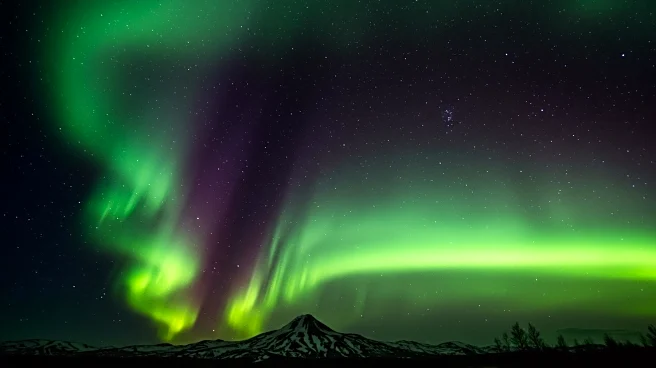What is the story about?
What's Happening?
A 'space hurricane' was observed over Earth's North Pole in 2014, despite quiet solar conditions. The phenomenon, lasting nearly eight hours, caused significant space weather effects, including GPS signal disruptions and magnetic field fluctuations. The hurricane, detected by the U.S. military's DMSP F17 satellite and confirmed by the European Space Agency's Swarm B satellite, measured over 620 miles in diameter. It featured a calm center and swirling spiral arms, flinging high-energy electrons into the upper atmosphere, visible through auroras.
Why It's Important?
The study of space hurricanes reveals their potential to impact satellite navigation, communications, and radio transmission systems, even during periods of low solar activity. Understanding these phenomena is crucial for mitigating risks to technological infrastructure and ensuring reliable communication systems. The findings highlight the need for continued research into space weather and its effects on Earth, as these storms may occur more frequently than previously thought, affecting both hemispheres.
What's Next?
Further studies are expected to explore the frequency and characteristics of space hurricanes, potentially leading to improved forecasting and mitigation strategies. Researchers may focus on developing technologies to better detect and analyze these storms, enhancing preparedness for their impacts on communication and navigation systems. Collaboration between space agencies and scientific institutions will be essential in advancing our understanding of space weather phenomena.
AI Generated Content
Do you find this article useful?














